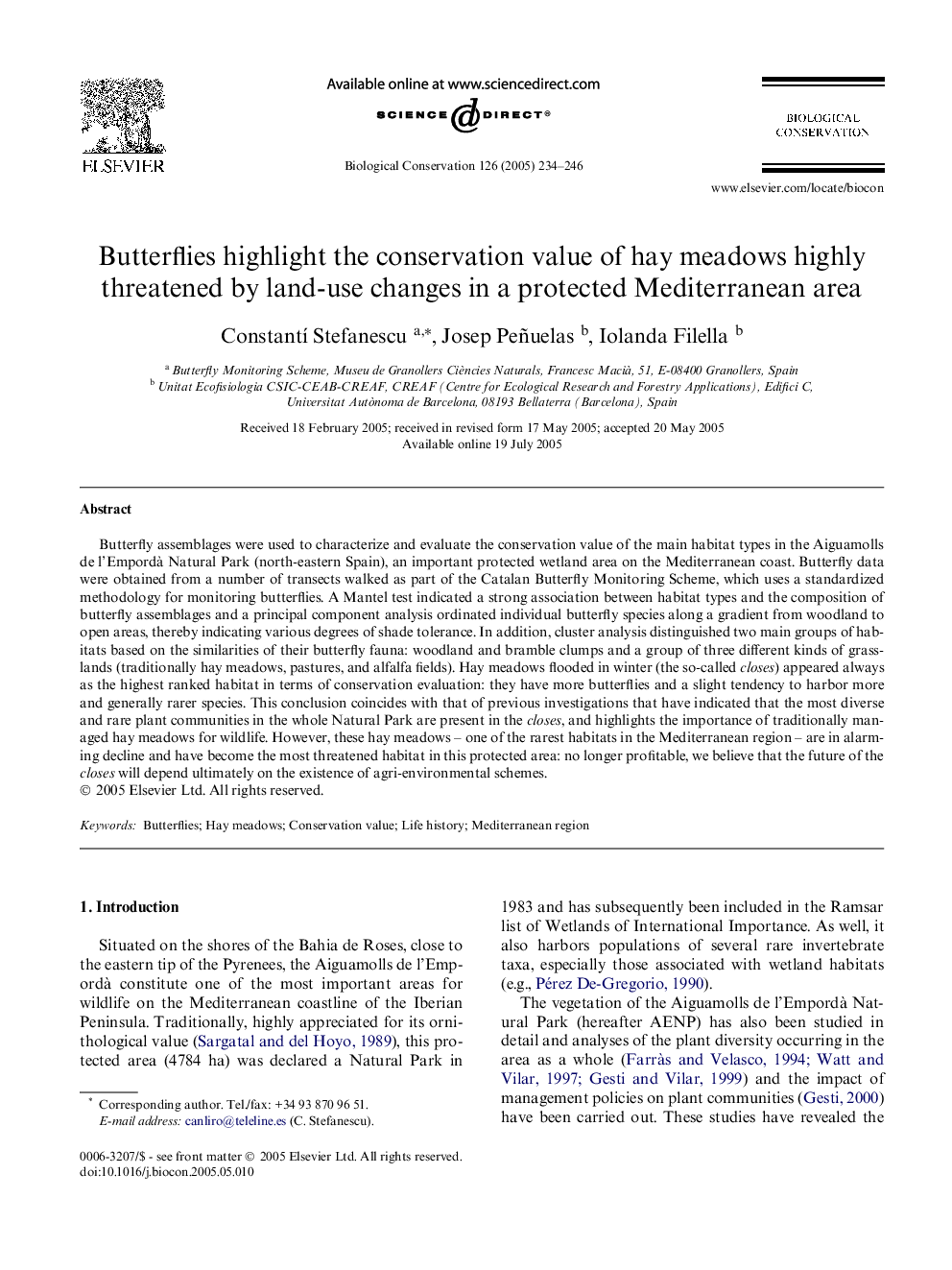| Article ID | Journal | Published Year | Pages | File Type |
|---|---|---|---|---|
| 9446036 | Biological Conservation | 2005 | 13 Pages |
Abstract
Butterfly assemblages were used to characterize and evaluate the conservation value of the main habitat types in the Aiguamolls de l'Empordà Natural Park (north-eastern Spain), an important protected wetland area on the Mediterranean coast. Butterfly data were obtained from a number of transects walked as part of the Catalan Butterfly Monitoring Scheme, which uses a standardized methodology for monitoring butterflies. A Mantel test indicated a strong association between habitat types and the composition of butterfly assemblages and a principal component analysis ordinated individual butterfly species along a gradient from woodland to open areas, thereby indicating various degrees of shade tolerance. In addition, cluster analysis distinguished two main groups of habitats based on the similarities of their butterfly fauna: woodland and bramble clumps and a group of three different kinds of grasslands (traditionally hay meadows, pastures, and alfalfa fields). Hay meadows flooded in winter (the so-called closes) appeared always as the highest ranked habitat in terms of conservation evaluation: they have more butterflies and a slight tendency to harbor more and generally rarer species. This conclusion coincides with that of previous investigations that have indicated that the most diverse and rare plant communities in the whole Natural Park are present in the closes, and highlights the importance of traditionally managed hay meadows for wildlife. However, these hay meadows - one of the rarest habitats in the Mediterranean region - are in alarming decline and have become the most threatened habitat in this protected area: no longer profitable, we believe that the future of the closes will depend ultimately on the existence of agri-environmental schemes.
Related Topics
Life Sciences
Agricultural and Biological Sciences
Ecology, Evolution, Behavior and Systematics
Authors
Constantà Stefanescu, Josep Peñuelas, Iolanda Filella,
